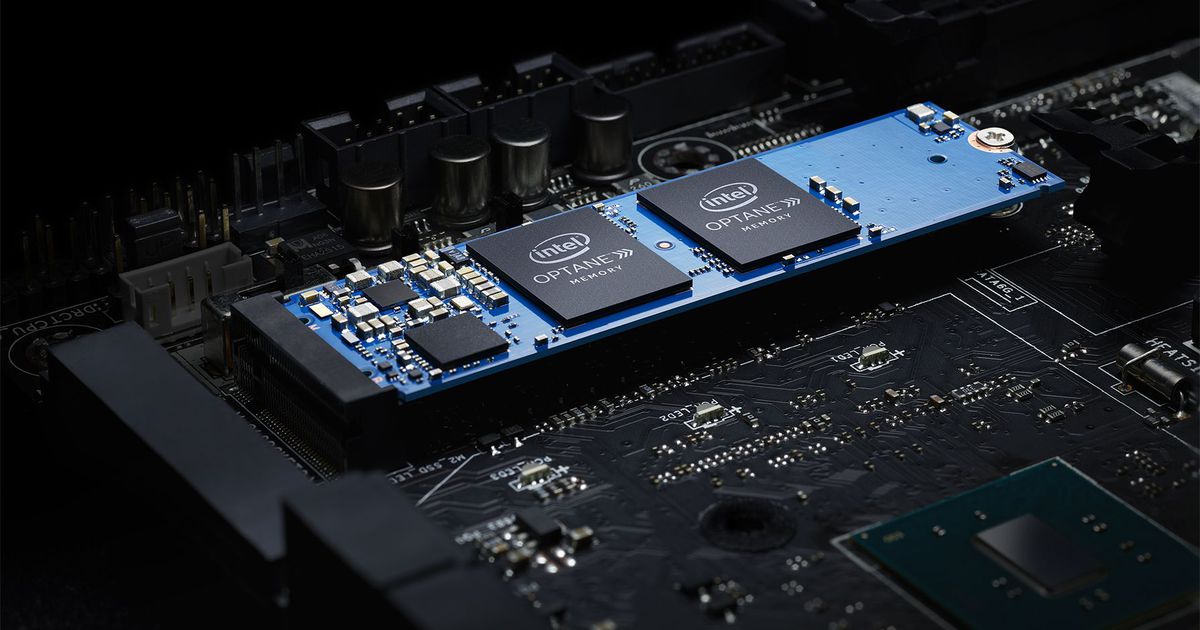Intel is ready to unleash its super fast secret weapon

Intel is ready to unleash Optane.
Intel isn’t down with that. On Monday, the chip maker announced the ship date for Optane, a memory module that can change the data game. It takes the speed and fluidity of RAM and combines it with the storage capabilities of Flash memory.
“Storage needs dramatically increased over the last several years,” said Intel Client Computing Group SVP Navin Shenoy who caught up with me to explain why Optane (unveiled at CES 2017) is a potential game-changer for computer users.
Working with system software, Optane can pre-cache frequently-used apps, which means they could load almost instantly. Even with system power turned off, the information remains (like a hard drive), and can be retrieved the moment the system is powered back on.
Since a lot of that information will be the core bits of the operating system your computer needs to run, boot times could be much, much faster.
There’s a ton of data and not all of it is living in the cloud. According to Intel, 79% of the desktop market still uses a hard drive. Hard drives are great for data storage but not very efficient data movers (delivering data in milliseconds, as compared to memory’s nanoseconds). And with more data, heavier webpages, 8K, HDR and an explosion in high-end, livestream gaming, the situation is only going to get worse.
Ten years in the making, Optane is not “incremental innovation,” said Shenoy, adding that it represents a fundamental shift in memory technology.
Optane memory breaks with the near 50-year tradition of using transistors and charge to determine ones and zeros, explained Intel Senior Fellow Al Fazio. In the case of Optane memory, “We dont use transistors. We change the resistance of material to store ones and zeros,” he said.
Essentially Optane memory uses material that stores information based on the state of atoms.
Fazio called it a “breakthrough in materiel science and physics” and one that Intel honed until they could achieve the performance and storage density necessary to make commercial products.
Optane memory also comes at a potential turning point in the personal computer market. After years of decline, the market has seen something of a design and market resurgence. IDC reported a rare jump in PC revenue growth for the last quarter of 2016. Those numbers have not gone up in years.
Optane modules promise to, according to Intel, dramatically speed up most of our core computer activities. Users will get, the company claims, a 28% overall system performance boost, plus:
- Microsoft Outlook will load 6x faster
- Chrome 5x faster
- Games will launch up to 67% faster
It will, however, be weeks, if not months, before systems start shipping with integrated Optane memory modules. Optane is designed to work with Intel’s Core i7 CPUs, which only just began shipping. Optane is not designed to work with all the Core i6 motherboards sitting inside many of today’s desktops and laptops. In other words, an upgrade to Optane is likely a full-system upgrade.
Shenoy told me manufacturers like Acer, Asus, HP, Dell and Lenovo plan to ship pre-configured Optane desktops starting in the spring. Microsoft, which makes its Surface line of laptops and desktops, is not currently on the Optane adoption list. Nor is Intel customer Apple.
Optane memory may only be the beginning of a golden age of super-fast personal computing. Intel already has Optane storage and, according to Fazio, the lines between storage and memory will further blur. “The ultimate vision is where you bring Optane directly into memory buses and have the concept of persistent memory.”
The modules, 16 GB ($44) and 32 GB ($77), will be available in April, but you’ll need an Optane-compatible motherboard to use them. Shenoy told me there are already 130 compatible motherboards on the market.
Read more: http://mashable.com/2017/03/27/intel-optane-memory-ship-date/
/https%3A%2F%2Fblueprint-api-production.s3.amazonaws.com%2Fuploads%2Fcard%2Fimage%2F424368%2F7cff9aa5-48fd-47df-9a9e-af457434113b.JPG)